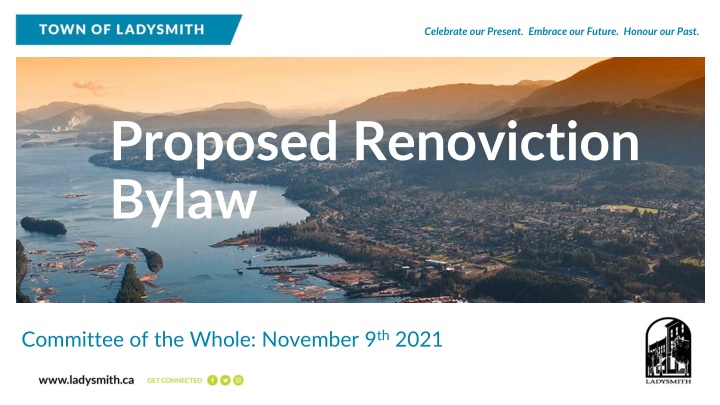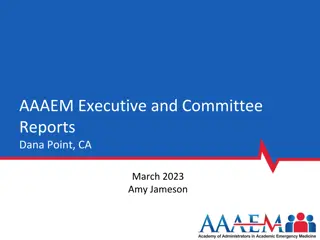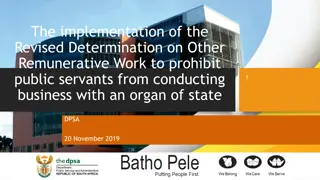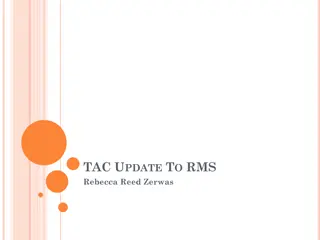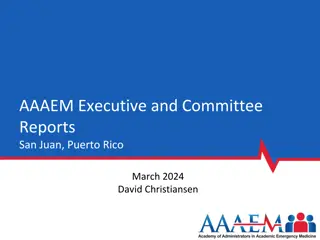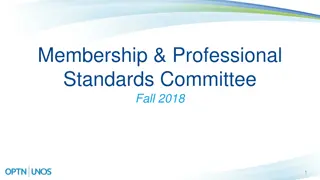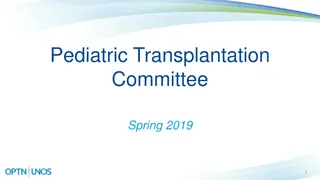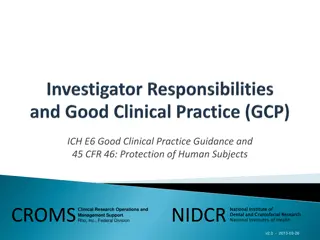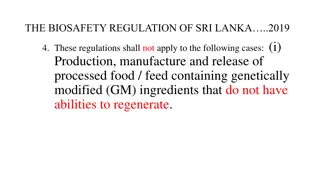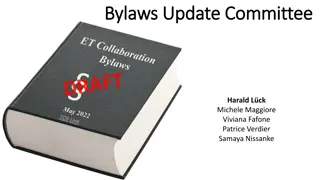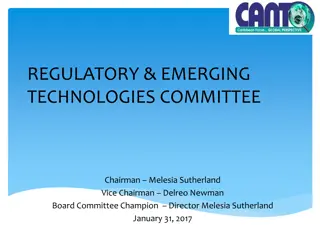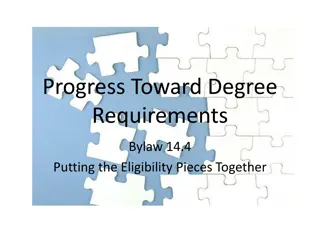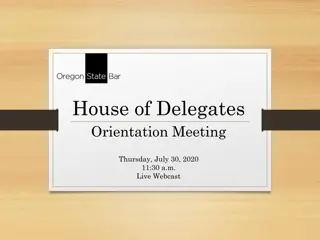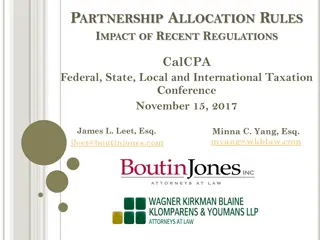Renoviction Bylaw Committee & Regulations Overview
New Westminster's Renoviction Bylaw, upheld by BC courts, regulates evictions for renovations, providing protections for tenants and setting maintenance standards. The Residential Tenancy Act also outlines rules for landlords carrying out renovations, ensuring fair treatment of tenants.
Download Presentation

Please find below an Image/Link to download the presentation.
The content on the website is provided AS IS for your information and personal use only. It may not be sold, licensed, or shared on other websites without obtaining consent from the author.If you encounter any issues during the download, it is possible that the publisher has removed the file from their server.
You are allowed to download the files provided on this website for personal or commercial use, subject to the condition that they are used lawfully. All files are the property of their respective owners.
The content on the website is provided AS IS for your information and personal use only. It may not be sold, licensed, or shared on other websites without obtaining consent from the author.
E N D
Presentation Transcript
Celebrate our Present. Embrace our Future. Honour our Past. Proposed Renoviction Bylaw Committee of the Whole: November 9th2021
Celebrate our Present. Embrace our Future. Honour our Past. What are Renovictions? Informal Term Definition 1: Evicting one or more tenants to complete renovations Definition 2: Evicting one or more tenants to complete unnecessary renovations, so as to rent the unit at a higher rate.
Celebrate our Present. Embrace our Future. Honour our Past. Background: The Community Charter 63 The authority of a council under section 8 (3) (g) [spheres of authority protection of persons and property] may be exercised in relation to the following: f) rental units and residential property, as those are defined in the Residential Tenancy Act, that are subject to a tenancy agreement, as defined in that Act.
Celebrate our Present. Embrace our Future. Honour our Past. Background: New Westminster s Renoviction Bylaw Amended its Business Regulations and Licensing (Rental Units) Bylaw to regulate renovictions in February of 2019 Bylaw also contains maintenance standards for rental units Upheld by BC Supreme Court: February 2020 Upheld by BC Court of Appeal: April 2021 PIBC Silver Award for Excellence in Planning Practice: June 2021
Celebrate our Present. Embrace our Future. Honour our Past. Background: Residential Tenancy Act : New rules effective July 1st 2021 Landlord must: Obtain all required permits and intend in good faith to carry out renovations Obtain an order of possession and prove that: Renovations necessitate vacancy Are needed to prolong or sustain the rental unit or building The only way to achieve the vacancy is to end the tenancy. Provide four months notice and one month s rent Give first right of refusal so tenants can return (for buildings with five or more units) Do not: Apply to demolitions or strata conversions Require interim accommodation or limit rental rates for first right of refusal Include local or regional considerations (e.g. local vacancy or rental rates) Override local government powers to regulate renovictions
Celebrate our Present. Embrace our Future. Honour our Past. Rationale for a Renoviction Bylaw in Ladysmith 0% Local vacancy rate, low regional vacancy rate. Affects both quality and quantity of rental housing High risk of homelessness Inflationary pressures on rental rates (e.g. large rent increases between tenancies) Size of community Limited resources to address homelessness Relatively large impact of an eviction of even a single multi-family building Age of rental housing stock Renovations more likely/extensive Greater impact of neglected maintenance
Celebrate our Present. Embrace our Future. Honour our Past. Considerations for a Renoviction Bylaw in Ladysmith Vacancy Rate Availability and local applicability of data Fluctuations Relative size of community and effect of new housing Age/quality of housing stock Needed vs. wanted renovations and demolitions Landlord obligations to maintain Heritage buildings Risk of demolition to avoid Tenancy Act/ bylaw restrictions
Celebrate our Present. Embrace our Future. Honour our Past. Proposed Bylaw Part 4: Maintenance and Building Standards Applies to all rental units. Bare minimums for livability (e.g. running water). Supports Part 5 by preventing buildings from being deliberately neglected and condemned. Part 5: Renovations and Demolitions Applies only to buildings with five or more rental units and rooming houses. Does not prohibit renovictions and has exemptions. Requires measures to support tenants when evicting for renovations or demolitions. Does not conflict with Tenancy Act, but does have additional requirements.
Celebrate our Present. Embrace our Future. Honour our Past. Part 5: Exemptions Automatic Exemptions 1. Vacancy Rate Greater than 3% 2. Property containing fewer than five rental units and fewer than five households 3. Condemned buildings 4. Strata conversions (already regulated by Strata Property Act and Town s Strata Conversion Policy) Permissible Exemptions Granted by Council if: 1. Alternative agreement reached between tenants/owner. 2. Tenant has unreasonably refused to sign a bylaw-compliant tenancy agreement. 3. Renovation will remedy an financial deficit caused by operating and maintenance costs. 4. Renovation will add at least 20% more rental units to the property. 5. Renovation will convert the rental unit(s) to social housing. 6. Renovation or demolition will result in an equivalent number of affordable market housing or social housing units. Requires notice to owner and tenants and opportunities for council Submissions. Generally non-discretionary, Council can only determine if owner is/is not eligible for an exemption.
Celebrate our Present. Embrace our Future. Honour our Past. Part 5: Requirements for Evictions Three Options: 1. Comparable on-site rental unit: Interim accommodation. Same or similar unit on the same property once renovations are complete. Same or better rental terms and rent. 2. Off-site rental unit, with the same or better rental terms and rent. 3. 12 months rent. No restrictions on agreements for voluntary vacancy. In addition to Tenancy Act requirements. Tenancy Act rent increases allowed.
Celebrate our Present. Embrace our Future. Honour our Past. Examples: Five unit building, $600/unit/month, four month renovation Example 1 Tenant 1: Agrees to interim accommodation at a local hotel and to return to first-available renovated unit. Tenant 2: Agrees to move to another unit the landlord owns in Duncan, where tenant works. Tenant 3: Working out of town for six months. Agrees to six months rent, six months of free storage and first right of refusal when tenant s old unit is available again. Tenants 4 & 5: Paid 12 months rent = $7,200/ Tenant, $14,400 total. Example 2 Landlord waits for unit 1&2 to become vacant, renovates units 1&2. Tenants from units 3 &4 relocate to units 1&2 at the same rent. Tenant from unit 5 paid 12 months rent ($7,200). Landlord combines units 3,4&5 into a large penthouse suite and rents at $2,800/month. Example 3 Landlord waits until vacancy rate is 3%. Evicts tenants and completes renovations. Example 4 Landlord pays all five tenants 12 months rent = $7200/Tenant, $36,000 Total.
Celebrate our Present. Embrace our Future. Honour our Past. Draft Bylaw: Specific Considerations Required building repairs (contravention of Part 4) As drafted: Order to repair and fines Other Option: Remedial action requirements Penalty for unauthorized renovictions As drafted: Payable to Town/General revenue Other options: Possibility of applying penalties to support affordable housing (e.g. pay evicted tenant, housing reserve etc.) Defining rental vacancy rate As drafted: CMHC s Rural Rental Market Survey Data. Includes Ladysmith but published every five years Other Option: Different CMHC report. Published more frequently (annually or quarterly) but only includes regional data. Council exemptions As drafted: Six, non-discretionary, qualifying exemptions Other option: Longer list of non-discretionary, qualifying exemptions Tenant payout option under 67(c) As drafted: Twelve months rent Other Options: Higher lump some (e.g. 16 months rent) or prorated amount based on length of tenancy (e.g. 12 months rent + 1 month for every year of tenancy).
Celebrate our Present. Embrace our Future. Honour our Past. Questions
